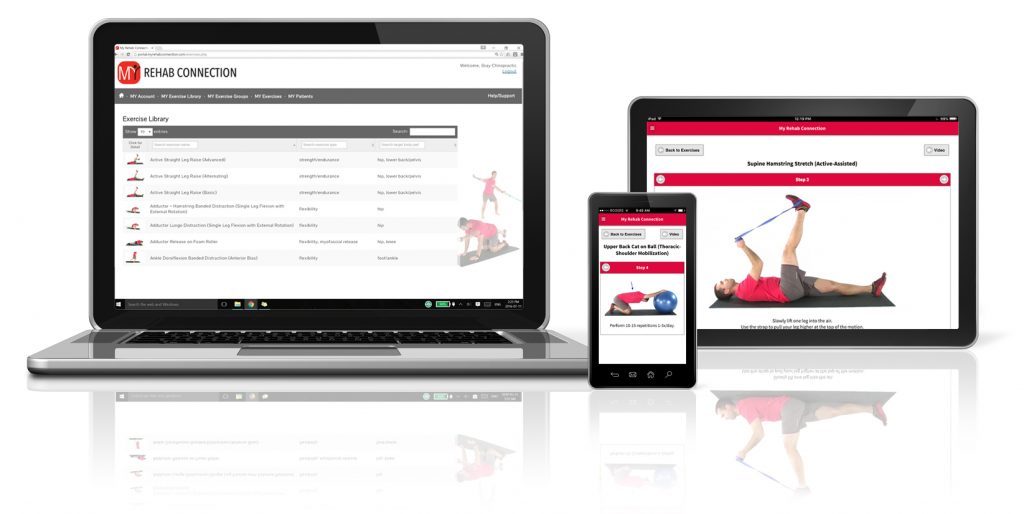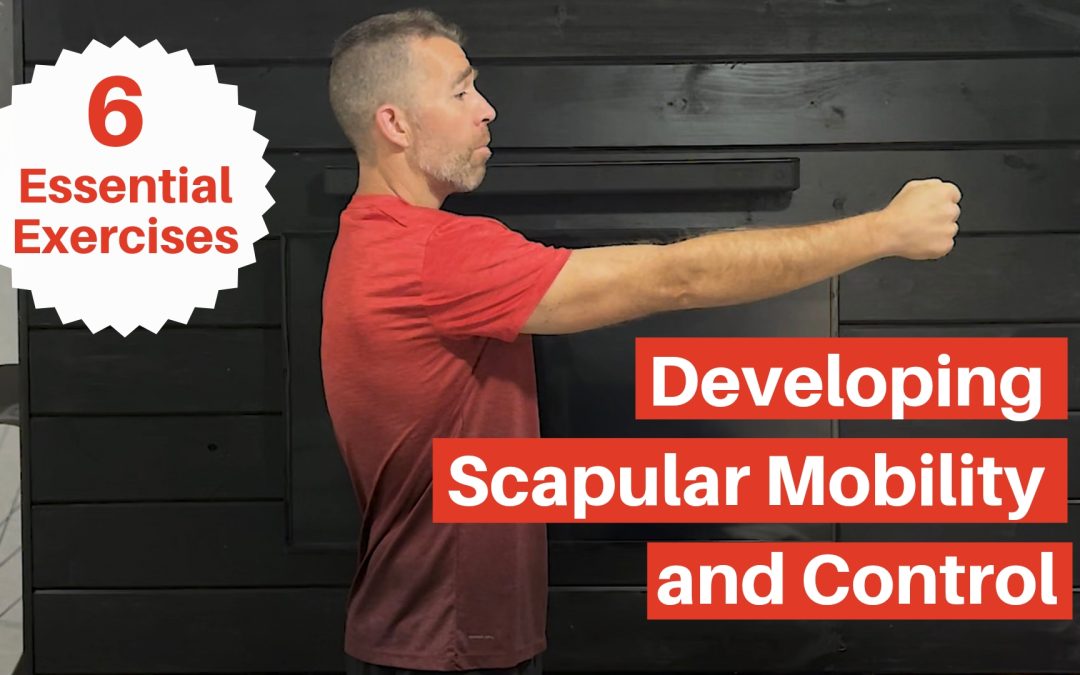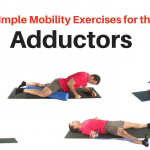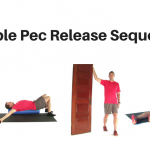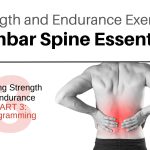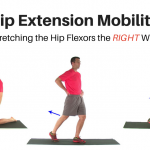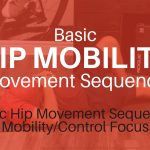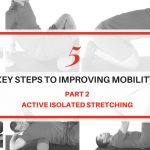The scapula is a critical link with shoulder and arm function. And because of the muscular connections, dysfunction here can play a big part with both neck and thoracic pain.
But this is also an often neglected area with training and rehabilitation. So we’re going to review some critical exercise progressions to train scapular control.
Here are the exercises…
Be Brilliant At Basics
The scapula needs to move all over the place. And we need this motion to be coordinated and controlled. So we’re going to start with the basics. By themselves these aren’t enough. By they form the foundation to build into more advanced progressions.
Scapular Elevation-Depression AROM/Mobilization
The key here is to focus the motion at the shoulder blade itself. To get the shoulder blade moving and sliding on the rib cage. And we (or our client/patient) needs to focus on “feeling” the muscles around the scapula contract. We will need to tie into the feeling in the more advanced progressions.
Be sure to keep the shoulders and arms relaxed. We want isolated and independent control of the shoulder blade.
Scapular Protraction-Retraction AROM/Mobilization
This is like the exercise above, but now in a forward/abduction and backward/adduction motion. Again, focus on getting the shoulder blade moving and sliding on the ribs. And focus on tensing and squeezing the scapular muscles to generate the motion. (Especially into adduction/retraction).
As above, keep the shoulders and arms relaxed. We want the |NS to be able to move and control the shoulder blade independent of the arm.
Progression 1: Adding The Arms
When the basics are mastered we want to progress the exercises to include the arms. Here we are layering shoulder motion onto scapular motion. We are increasing the control challenge for the CNS and teaching the shoulder and scapula to work together.
Bilateral Scap Reach
Here the scapular motion is the same as that above. But even though we’re adding the arms the focus is on the scapula. We’re pulling the arms back by moving and squeezing the scapula together. Likewise, we’re pulling the shoulder blades forward as the arms come together.
Remember the focus on “feeling” the muscles emphasized above. We want to generate the same feeling of muscle contraction here.
Scap Push-Pull
This exercise also focuses on scapular protraction/retraction. But here we’re using a push-pull movement. This starts to get a little more “functional”. The big progression here is it’s unilateral. That means the CNS has more movement options to get the arm forward and back.
In other words, more compensations are possible. Common here will be rotating through the spine or pulling with/bending the elbow. Exaggerated elevation of the shoulder blade with retraction is also possible. Correct this.
Progression 2: Combining Movements (CARS)
In this final progression we’re going to go back to isolated scapular motion. But this time we’re combining motions together as opposed to using a single plane.
Scap CARS (Bilateral)
Here we’re moving the shoulder blades in a circular motion. This combines the motions of elevation/depression and protraction/retraction. These types of exercises are often called CARS (controlled articular rotations).
These often look easy and basic. But when done properly they can be quite challenging. The key is to make a big circle. In other words, be conscious and deliberate to move the shoulder blade as far as possible in each direction. Feel the muscles tense and squeeze as emphasized in the more basic progressions.
But keep good form. The motion is to occur through the shoulder blades and only the shoulder blades. No twisting or leaning with your spine. And keep the arms relaxed.
Scap CARS (Unilateral)
This final progression is like that seen above. But now we’re doing one shoulder blade at a time.
That again means the CNS has more opportunities to compensate for the scapula. So don’t let the spine twist or lean side-to-side or front-to-back. And keep the arms relaxed.
Make Your Exercise Prescription Easier and More Effective with My Rehab Connection
Home exercise prescription is of the most important aspect of patient care. But it can also be incredibly frustrating and time consuming. Patients often forget what you tell them, do the exercises wrong, or forget what exercises to do all together.
This is a major barrier to getting the results that you want and your patients need. But our home exercise software can help. Check it out to see how it works.
And remember, if you like the exercises you see here they are all part of our My Rehab Connection Exercise library.
